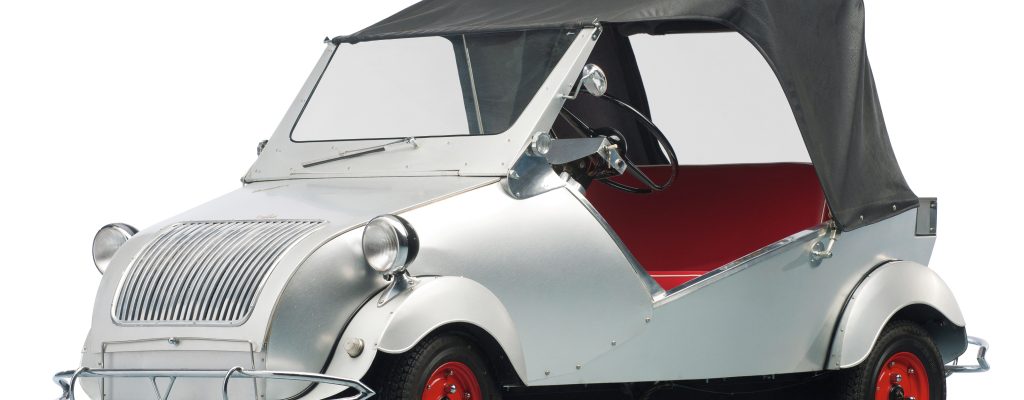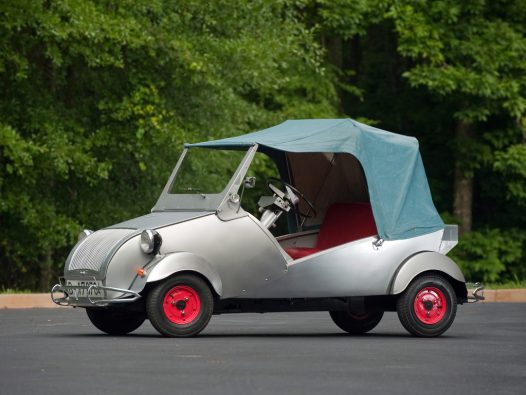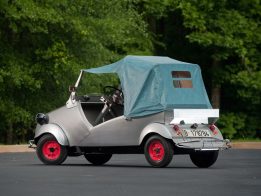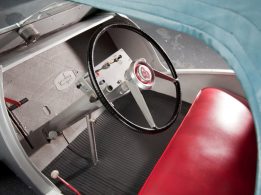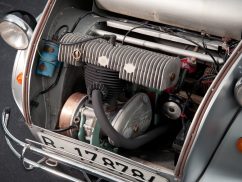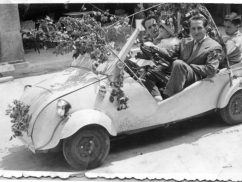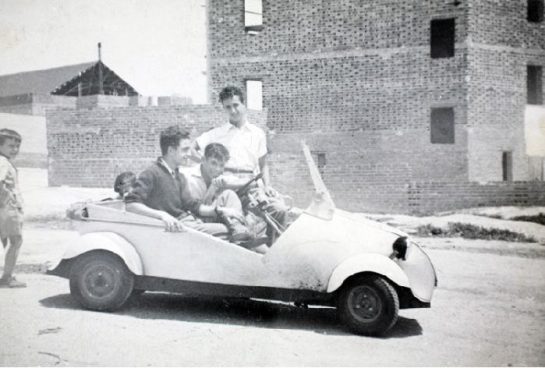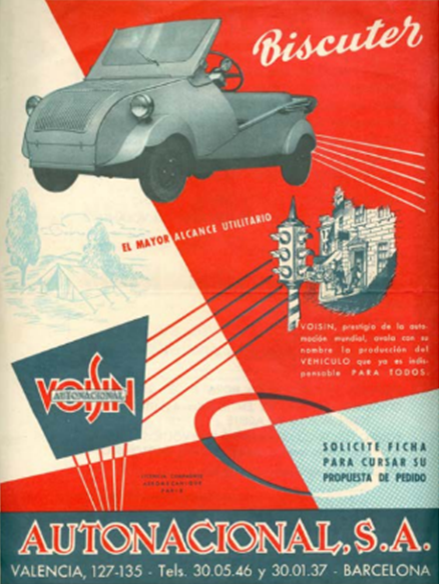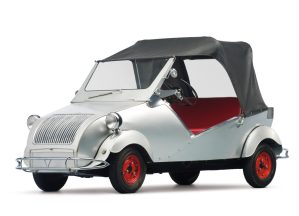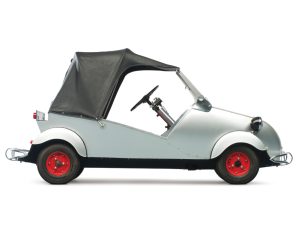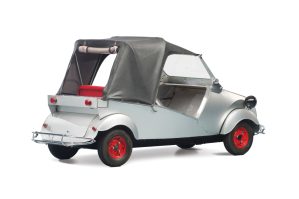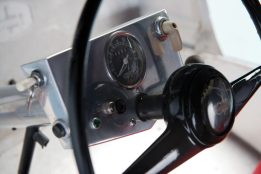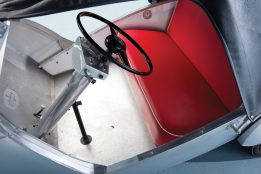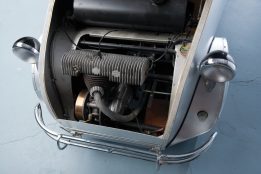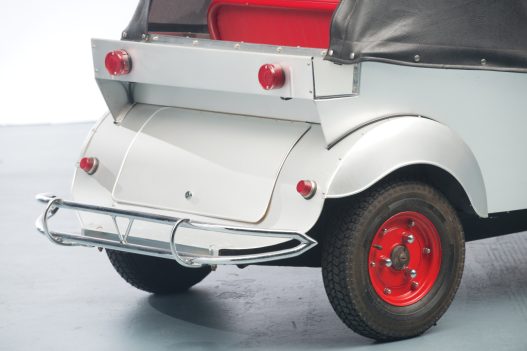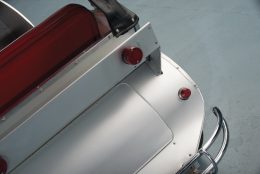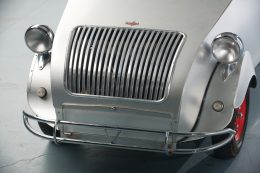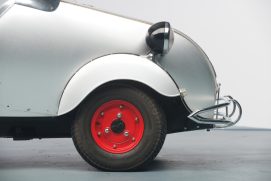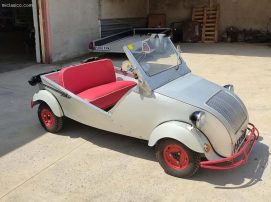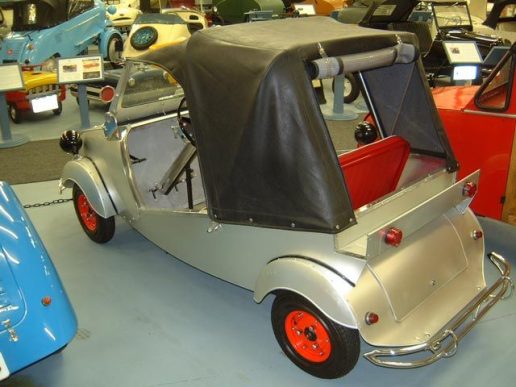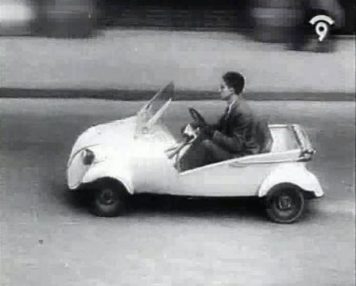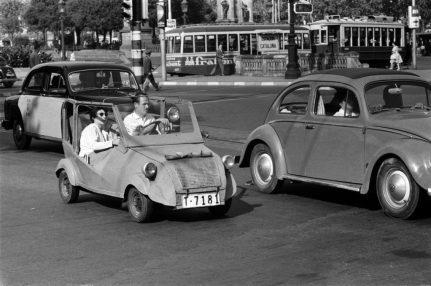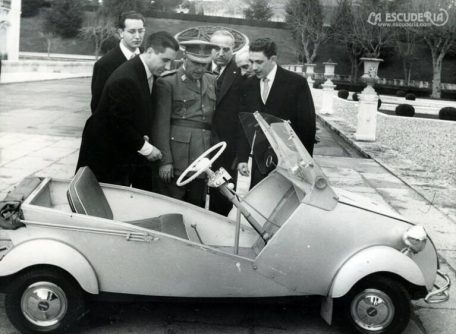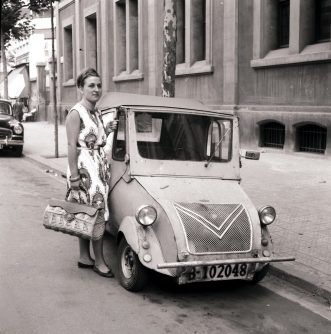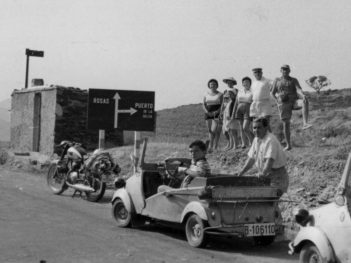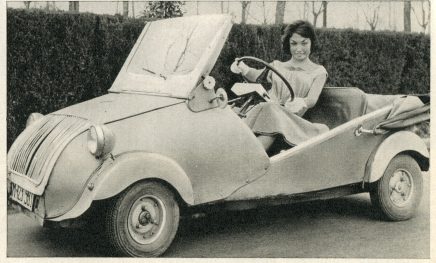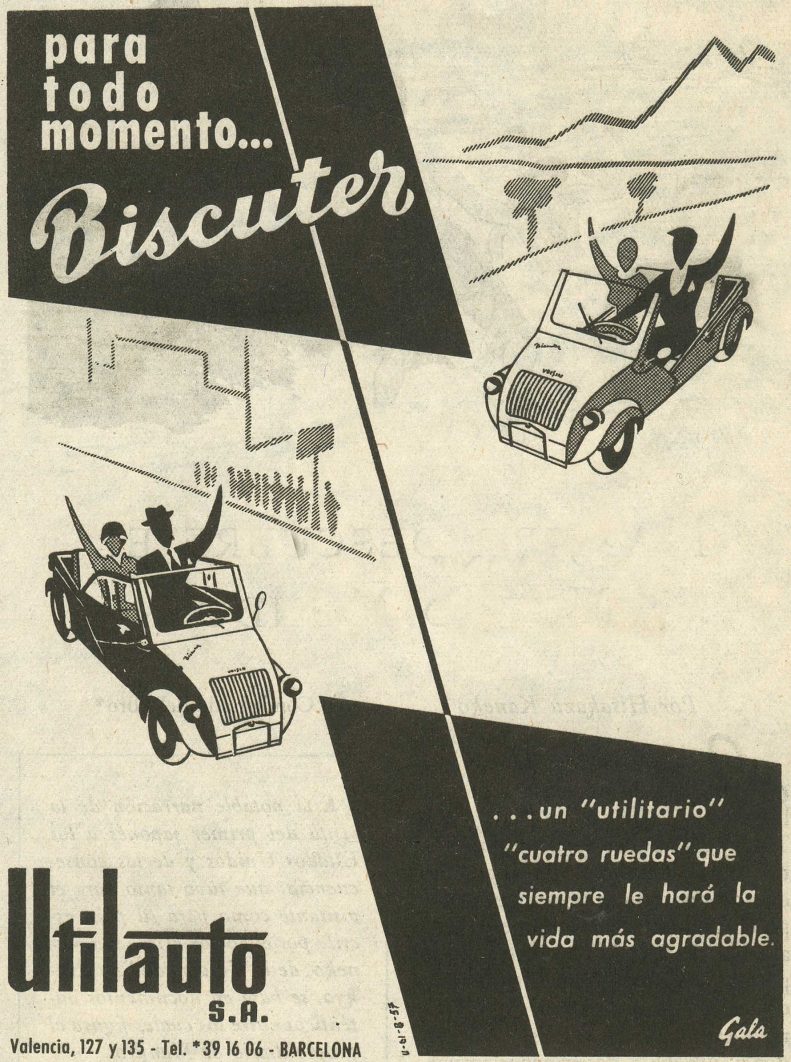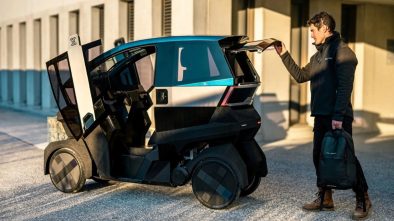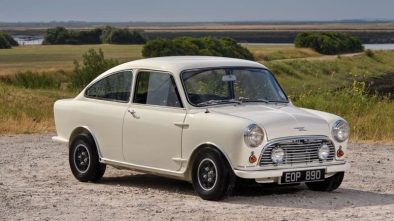Biscuter 100 / 200 A (Normal Turismo)
Despite what it meant in post-war Spain and its popular roots (which gave rise to jokes such as “it’s uglier than a Biscuter”, etc.), the Biscuter was the work of a French engineer, Gabriel Voisin, a pioneer of aviation (he built the first plane to fly over Europe) and vehicle manufacturer in France.
At the end of the Second World War, Voisin returned to the idea of a two-seater buggy and in 1947/48 he designed a new vehicle with an aluminium monocoque body manufactured by Potez and a 125 cc two-stroke Gnome & Rhone engine, which was presented at the 1949 Paris Salon under the name Biscooter.
The little Voisin was a great success and almost 1,500 firm orders were taken, although a subsequent market study did not recommend its production, which, together with Voisin’s disagreements with Gnome & Rhone, seemed to indicate that the project would be completely forgotten, but a group of Spanish businessmen acquired the patent to start production in Spain.
In 1953, the company Auto Nacional, SA was founded in San Adrián del Besós, with José María Marcet Coll, a well-known businessman, mayor and president of the Sabadell Aeroclub, as chairman and Damián Casanova as workshop manager.
Gabriel Voisin oversaw the project and even travelled from Paris to Barcelona with the prototype, a feat given that Voisin was already 77 years old. The Spanish-built Biscuter was unveiled at the 1953 Motor Show and was a resounding success, encouraging the company to produce it the following year under the name Biscuter Autonacional Voisin (the name Biscuter comes from the Spanishisation of the term Bi-scooter, as this car could be considered a double scooter or a scooter with 4 wheels).
The Biscuter Normal Turismo (100 and 200 A) was the first model produced and the most popular (it was known as the “Zapatilla”). It had an open body with a canvas top and, as an option, doors with windows, also made of canvas, and a single long seat for two adults (2/3 seats were advertised in the brochures). The 100 model had an aluminium body and weighed 240 kg, while the later 200-A had a heavy steel body which increased its weight to 295 kg.
Overall dimensions. Length: 2.56 meters. Width: 1.10 meters. Height: 1.38 meters. Speed: 76 km/hour. Fuel consumption: 4.5 liters/100 km “mixed” (actually almost double).
The “Hispano Villiers” engine was manufactured in Spain under licence from the British company “The Villiers Engineering Co”. It was a single-cylinder, two-stroke engine with 197 cc (59×72 mm), rated at 9 bhp at 4,800 rpm, with a top speed of 5,800 rpm. The cylinder head was made of aluminium and the cylinder of cast iron.
The gearbox had 3 forward speeds (no reverse) with a steering wheel-mounted lever and drove the front wheels via chains. From 1955 the reverse gear was realised by reversing the engine, so the car had 3 reverse gears.
Brakes are drum, the front one on the differential and the rear ones on the wheels. Suspension is independent on all corners, telehydraulic, by spiral springs and rubber elements.
Like the vast majority of microcars of the time, its time came to an end with the presentation of the Fiat 600. The company closed in 1960, although no cars had been produced since the previous year.
